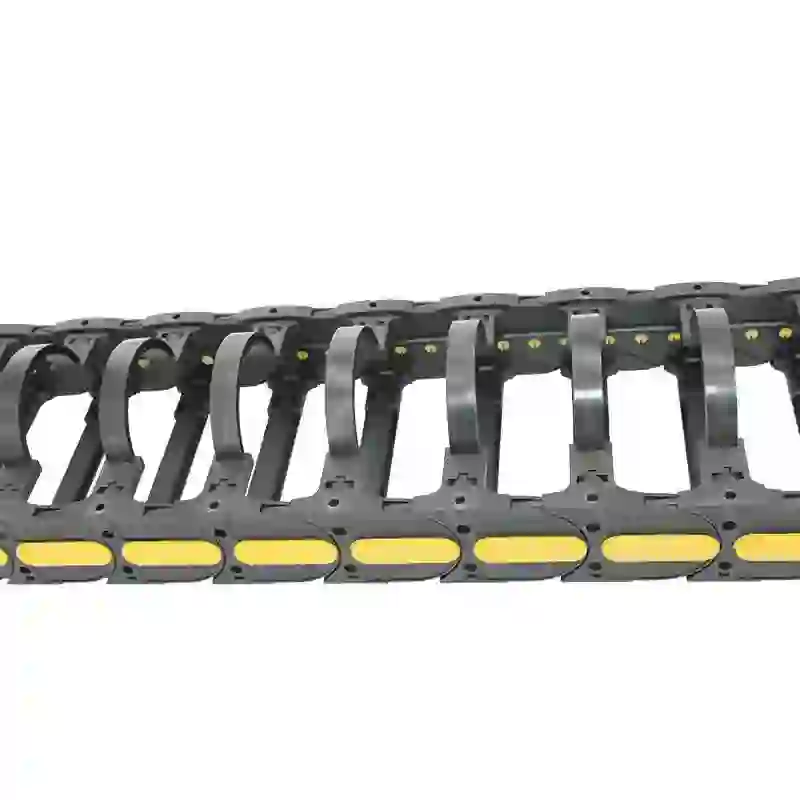Choosing the Right Size for Your Cable Drag Chain System
Understanding Cable Drag Chain Size Charts
In the realm of industrial automation and machinery, the management of cables and hoses is a critical component for ensuring safety, efficiency, and longevity of equipment. One of the key tools for effectively managing these cables is the cable drag chain. A cable drag chain, or cable carrier, is designed to guide and protect cables and hoses in motion, preventing tangling, abrasion, and wear while allowing for efficient movement along a designated path. Selecting the right size drag chain is essential, and this is where a cable drag chain size chart comes into play.
What is a Cable Drag Chain?
A cable drag chain is an assembly of interconnected links that create a channel for cables and hoses to move within. Typically used in CNC machines, robotic arms, and other equipment with moving parts, these drag chains help to organize and facilitate the safe operation of electrical and hydraulic systems. When machinery moves along different axes, the cables can be subjected to wear and tear; drag chains mitigate this risk by providing a controlled path for these cables.
Importance of Size Selection
Choosing the right size for a cable drag chain is crucial. An inadequately sized chain can lead to increased wear on cables due to friction or inadequate support. Conversely, an overly large chain can add unnecessary weight and bulk to the system, ultimately affecting performance. Therefore, utilizing a cable drag chain size chart is an excellent practice for engineers and technicians involved in equipment design and maintenance.
Key Factors for Size Determination
Size charts assist in determining the appropriate dimensions for a cable drag chain based on several critical factors
1. Cable or Hose Dimensions The size of the cables or hoses that need to be accommodated is the primary factor. It's important to measure the diameter, length, and overall quantity of cables to accurately select a drag chain that can house them comfortably.
cable drag chain size chart

2. Travel Distance The total distance that the chain will cover during operation affects both the length of the chain required and its dimensions. Longer travel distances typically require larger chains to ensure smooth operation.
3. Movement Type Understanding the type of motion (linear, rotary, etc.) and how frequently the equipment will move is vital. Different movements may necessitate various chain configurations.
4. Environmental Conditions Conditions such as temperature, humidity, and exposure to chemicals can also influence the choice of material and size of the drag chain. Some materials may expand or contract under different environmental stresses, impacting cable performance.
5. Load Capacity The weight of the cables and hoses should not exceed the load capacity of the drag chain selected. Size charts typically include load ratings to help mitigate this risk.
Using the Cable Drag Chain Size Chart
When utilizing a cable drag chain size chart, begin by analyzing the specifications of the cables and hoses that will be housed within the drag chain. Most size charts will provide a range of chain dimensions alongside the maximum load capacity that each size can manage. Consult the charts to find a drag chain that accommodates your cable specifications while remaining within the operational limits.
Furthermore, select a chain type based on your application needs—this can include options for low noise, special materials for chemical resistance, or specific link designs for enhanced flexibility. It’s also advisable to consult with manufacturers or suppliers for additional advice and guidance.
Conclusion
In conclusion, cable drag chains are a vital component in the efficient operation of modern machinery, and choosing the correct size is essential for ensuring optimal performance and longevity. A cable drag chain size chart is a valuable resource that provides insights into the appropriate dimensions required for various applications. By understanding the key factors involved in selection, and effectively utilizing size charts, engineers and technicians can ensure that their systems operate smoothly and safely, thereby reducing downtime and maintenance costs.








